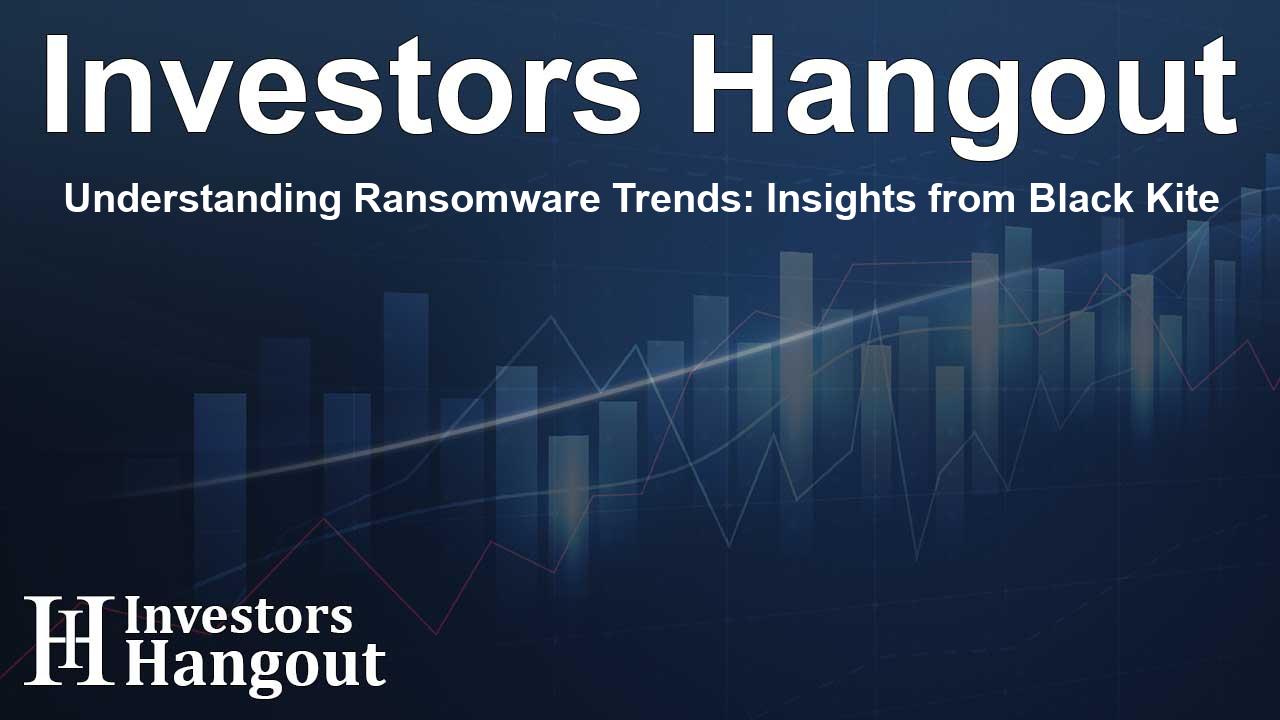Understanding Ransomware Trends: Insights from Black Kite

Ransomware Attacks Surge: A Comprehensive Analysis
Black Kite, a leader in third-party cyber risk intelligence, has released a critical report shedding light on the evolving landscape of ransomware threats. This latest report highlights a staggering 123% increase in ransomware incidents over the past two years. The research underscores a growing need for companies to adopt adaptive security measures to combat these rising threats effectively.
Unpredictable Threat Landscape
The comprehensive report indicates that the number of publicly disclosed ransomware victims has risen significantly, marking a 25% increase from the previous year. This increase follows an alarming 81% spike the prior year. The escalation in ransomware activities has become unpredictable, with attacks now penetrating small and mid-sized businesses (SMBs), which are perceived as easier targets. The complexity of these incidents can often go unnoticed, leading to significant disruption across various sectors.
The New Ransomware Actors
With the downfall of notorious ransomware syndicates, the cyber threat ecosystem has shifted. Black Kite reports that 52 new cybercriminal groups emerged in the last year alone, resulting in a total of 96 active ransomware groups. Unlike their predecessors who operated with complex strategies, many of these newer actors rely on less sophisticated methods while still aiming to extort and disrupt.
Impact on Supply Chains
Supply chain vulnerabilities have also surfaced as a major concern. Attackers are increasingly focusing on third-party vendors, understanding that a single compromised supplier can have a cascading impact, disrupting operations and security across numerous organizations. These silent breaches remain a significant risk, often allowing attackers to exploit systems without immediate detection.
Emerging Methodologies and Insights
Black Kite’s Ransomware Susceptibility Index (RSI™) serves as a pivotal tool in this ongoing battle against cybercrime. The index quantifies the risk for organizations on a scale from 0.0 to 1.0, providing valuable insights into their vulnerability to ransomware attacks. Organizations with an RSI score above 0.8 face an alarming risk, with nearly half experiencing actual ransomware incidents.
Key Findings from the Report
- Publicly disclosed ransomware victims reached 6,046, a 24% increase year-over-year.
- Newly documented ransomware groups rose to 52, marking an increase in the number of active groups to 96.
- SMBs, typically characterized by limited resources, are now principal targets for ransomware attacks.
- Ransomware is implicated in 67% of recognized third-party breaches.
- Organizations exhibiting high RSI scores are significantly more prone to ransomware incidents.
- Interestingly, although ransom demands have decreased, the effects of these attacks have broadened, posing new challenges for cybersecurity frameworks.
Responding to the Evolving Threat
With the ransomware landscape changing rapidly, organizations must shift their focus from merely identifying potential risks to actively anticipating and mitigating them. The introduction of AI-driven ransomware attacks presents a unique challenge, enabling attackers to navigate past established security measures and evade detection successfully.
Looking Forward
Organizations must adapt their cybersecurity postures accordingly. The integration of a proactive approach, emphasizing continuous monitoring and intelligent risk assessment, is crucial for resilience against these ever-evolving threats. By doing so, firms can better safeguard their operations and potential vulnerabilities.
Frequently Asked Questions
What does the 2025 Ransomware Report highlight?
The report reveals a 123% increase in ransomware attacks over the past two years and identifies a shift in the threat landscape with the emergence of new cybercriminal groups.
How important is the Ransomware Susceptibility Index?
The RSI is critical as it quantifies an organization's risk of being targeted by ransomware, with higher scores indicating greater vulnerability.
Which entities are currently the most targeted by ransomware?
Small and mid-sized businesses are now primary targets due to their typically weaker cybersecurity defenses.
What role does supply chain risk play in ransomware attacks?
Attackers are focusing more on third-party vendors, as compromising a single supplier can lead to widespread disruptions across linked organizations.
How should organizations respond to these threats?
Firms must adopt a proactive and adaptive cybersecurity strategy, focusing on monitoring, anticipating threats, and enhancing their resilience to cyber attacks.
About The Author
Contact Henry Turner privately here. Or send an email with ATTN: Henry Turner as the subject to contact@investorshangout.com.
About Investors Hangout
Investors Hangout is a leading online stock forum for financial discussion and learning, offering a wide range of free tools and resources. It draws in traders of all levels, who exchange market knowledge, investigate trading tactics, and keep an eye on industry developments in real time. Featuring financial articles, stock message boards, quotes, charts, company profiles, and live news updates. Through cooperative learning and a wealth of informational resources, it helps users from novices creating their first portfolios to experts honing their techniques. Join Investors Hangout today: https://investorshangout.com/
The content of this article is based on factual, publicly available information and does not represent legal, financial, or investment advice. Investors Hangout does not offer financial advice, and the author is not a licensed financial advisor. Consult a qualified advisor before making any financial or investment decisions based on this article. This article should not be considered advice to purchase, sell, or hold any securities or other investments. If any of the material provided here is inaccurate, please contact us for corrections.
